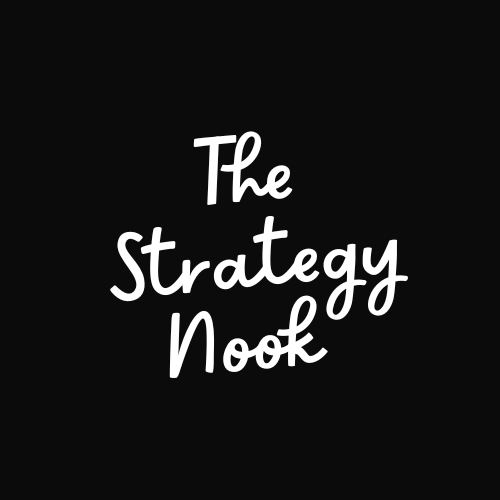How I'm approaching AI
Unless you’ve been living in a cabin without internet, you too have endured the non-stop onslaught of AI announcements, tech launches, and LinkedIn posts telling us our jobs are cooked.
It’s a lot.
At some point, I had to stop scrolling and ask myself...What does any of this actually mean for me? For the work I do? For the skills I want to grow?
If you're feeling stuck or overwhelmed about how to use AI, welcome to the club. That's exactly where I found myself, and it's part of why I built The Strategy Nook. To test ideas, share opinions, and occasionally make claims I can't fully back up.
And yeah, I decided to start with AI. Not because I'm some tech evangelist (I'm not), but because it's what everyone is talking about, and frankly, I want to be prepared for an AI-first future.
My AI Roadmap
This is where I started, and it's where I think most people can start, too. The first step is about building enough comfort to make AI genuinely helpful. Once you've done that, you can begin exploring ways to integrate deeper.
Here’s what that progression can/should look like:
Step 1: Building fluency through daily use
The goal is simple. Start using AI immediately in small, manageable ways. I used it to:
Clean up meeting notes
Spin up google sheet formulas
Draft email responses
Just make a habit of interacting with it on a daily basis. ChatGPT was and still is my main squeeze, but try any of them. Claude, Gemini, whatever. The faster you experiment, the quicker you’ll find real, practical ways to integrate it into your daily tasks.
Step 2: Stretching what's possible
Once I felt comfortable with basic interactions, I began pushing to develop a deeper understanding of it's capabilities.
I started treating AI as a collaborative partner rather than just a tool. Instead of using it for one-off tasks, I started involving it in my creative process. This meant exploring slightly more sophisticated use cases like:
Turning vague requirements into detailed project plans
Analyzing competitor websites to identify strategic opportunities
The key shift was learning to shape it's capabilities to my specific needs. I got better at crafting prompts that yielded useful results, recognized when to switch between different models, and developed workflows that combined AI assistance with my own expertise.
Step 3: Using AI with existing tools
This is where I started exploring how AI could assist with the actual execution. AI became my active collaborator rather than just a consultant.
Tools are increasingly enabling this deeper integration through accessible APIs and built-in AI functionality. Webflow's MCP server is a prime example. It provides AI with access to their API, enabling you to instruct an AI to do things like update content, create a new page, or publish something live.
Another interesting example is using Relume's built-in AI to wireframe web pages that I can import into Webflow. This creates an insanely quick workflow for site building. It's not perfect by any means, but it gets me from zero to one so much faster.
Step 4: Designing your own tools
While Step 3 is about using what’s already out there, Step 4 is about building your own. Instead of adapting to existing tools, you're shaping workflows that mirror how you think and work.
Think of it as adding team members with specialized skills, not just extending your own capabilities:
Creating custom GPTs that handle domains where I'm not an expert
Building workflows where AI can make decisions and take actions with little oversight
At this stage, AI becomes more of a capability you design and direct.
Where I Am and What's Next
Right now, I’m somewhere in Step 3 territory. I've built up a decent collection of prompts and mini-workflows that are 100% saving me time, but the best part is that I don't have to consciously remember to use it anymore. It's just become one of those things I automatically reach for. It doesn't magically do my job, but it does make the annoying parts go faster so I can focus on the stuff humans are still better at.
Step 4 is where I’m headed. I want to build AI systems that fill my gaps and handle the stuff I'm not great at. I'd love to spend less time bouncing between tools and tasks or slogging through rigid processes, and more time on the good stuff.
If you’ve been feeling stuck or unsure where to start, maybe this kind of low-stakes approach could work for you, too. If any of this resonates or you've got your own experiments running, hit me up—I'd love to hear about them!


